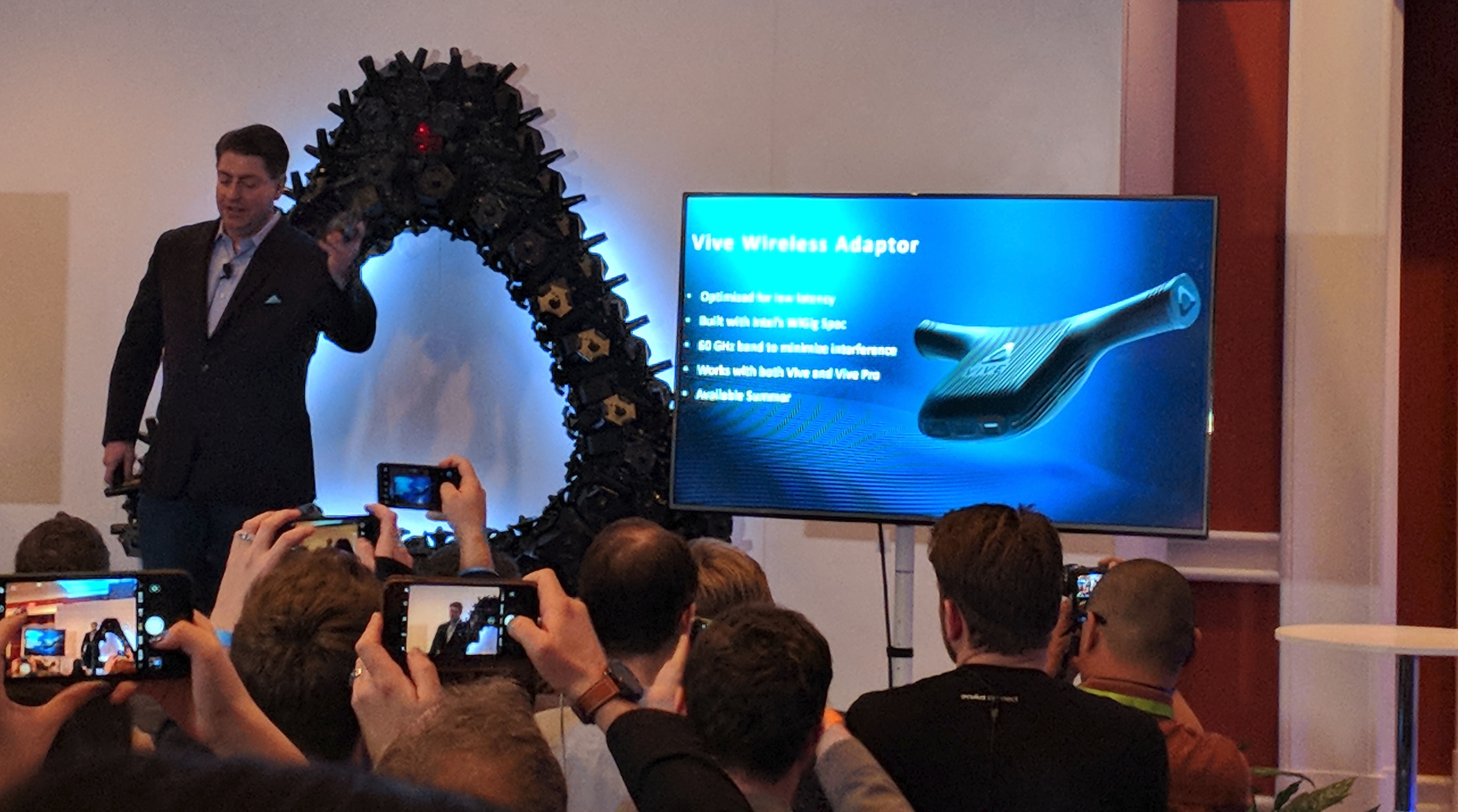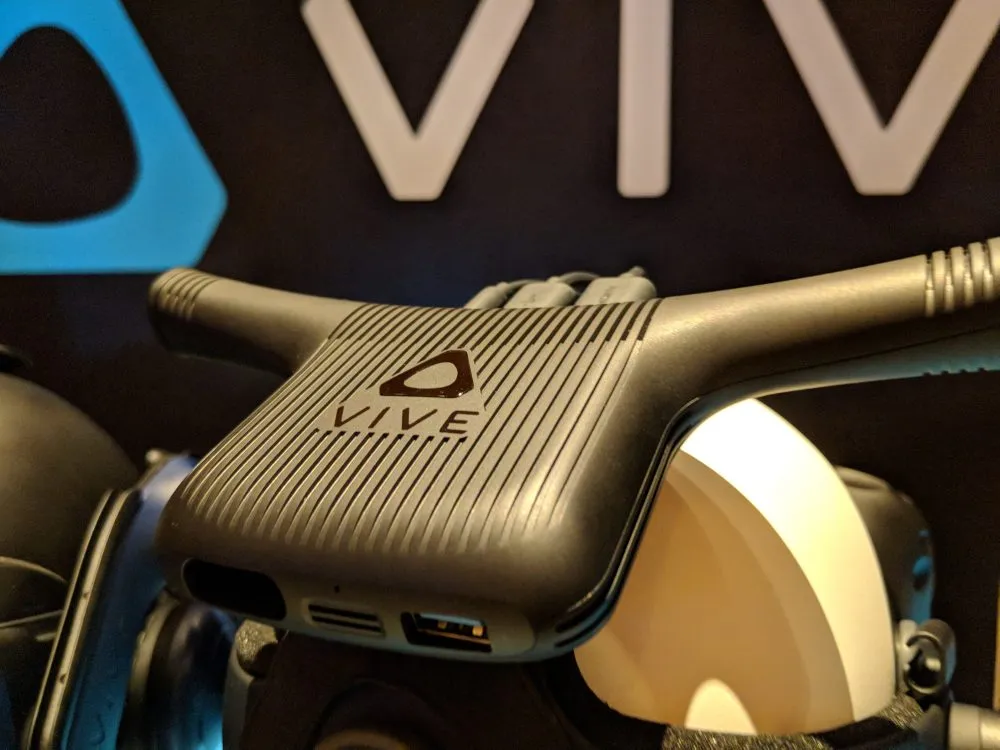Anyone that’s played a VR shooter runs into this problem. You’re getting really into the game. You’re running all over the map or teleporting up and down corridors, dodging enemies, and unloading clip after clip into your foes. A big enemy comes lunging at you and using your nifty teleportation feature (such as in DOOM VFR) you teleport past them and spin around to blast them in the back…but the stupid VR headset cord is in the way!
You stumble a bit, lose your focus, maybe even trip completely, and the adrenaline is completely gone. Wireless VR totally remedies this frustrating issue.
During HTC Vive’s CES 2018 press conference we learned about three main pieces of upcoming technology: the Vive Pro headset, the improved 2.0 base stations, and the official Vive Wireless Adapter. The promise of accurate, untethered, and totally free VR movement is extremely tantalizing, but it’s still just out of reach for most people.
While solutions like TPCast do exist, they’re from third-party creators and aren’t closely integrated with a single device in the way that the official Vive Wireless Adapter is going to be. After HTC’s press conference we got the chance to go hands-on for the very first time with the Vive Wireless Adapter and came away extremely impressed and optimistic about the future of wireless VR.

For my demo I played through a small portion of DOOM VFR using two Vive wand controllers. The demo ran on a standard, original Vive with 1.0 base stations and a Vive Wireless Adapter attached to the top. One small wire ran down from the adapter to a box that clipped to my pocket and a single transmitter was mounted high to a wall, aiming down at the play space.
The sheer sense of liberating freedom achieved from cutting the cord and being able to walk around a virtual space freely and without interference cannot be overstated. It took a little while for me to get used to the freedom because I’ve trained myself over the years to stand as still and front-facing as possible to not get tangled up, but eventually I started to trust my chaperone system a bit more and really move around the space.
Doing things like ducking and bobbing back and forth felt great. Spinning quickly around 180-degrees was fast and responsive, such as in the scenario I laid out at the start of this story, and really let me feel like I had the freedom to react however I wanted.

I didn’t get to test it extensively but it felt light and didn’t add any noticeable weight or comfort issues to the headset as a whole — though there was one moment when the wire touched my face, causing me to turn the other way because I thought I was tangling myself up. We look forward to putting it through its paces a bit more thoroughly in the future, but for now, this is a great first impression for a kind of technology that will be instrumental to accelerating VR’s adoption.


























